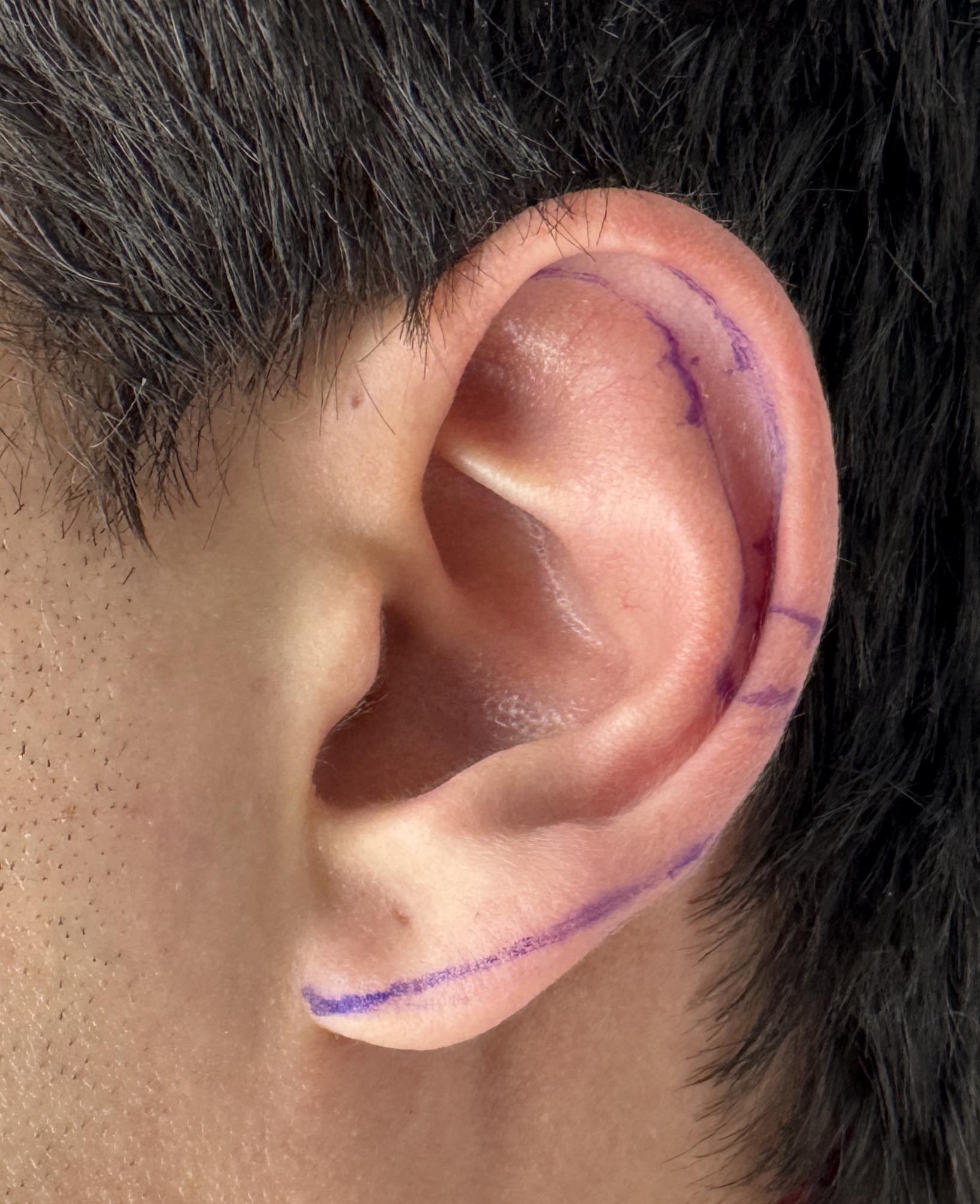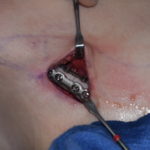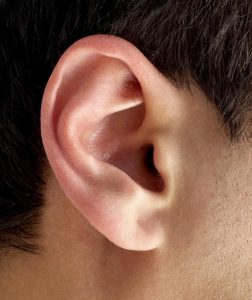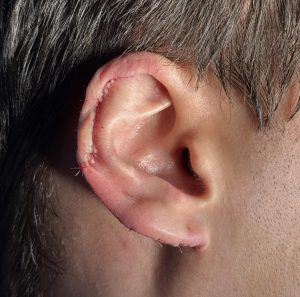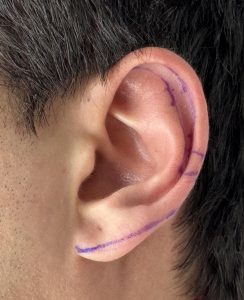Background: The external ear is a complex shaped structure composed of numerous convexities and concavities. As a result it has many shape variations but there are two ear features that can be universally appreciated and described…how big it is (size) and whether it sits close or far away from the side of the head (auriculocephalic angle).
The size of the ear may be a visual judgment but it can also be quantitated by linear measurements. The range of normal ear lengths/height is in the 55mm to 65mm range. There are gender differences with the female ear being a little smaller than that of a male. Female are usually in the 55 to 60mm range while men are larger in the 60 to 65mm range. Despite these average linear measurements there is also one’s subjective assessment of the size of their ear. One can feel that their ear is too big even if it falls into the normal range for their gender.
The size or vertical length of the ear can the surgically reduced by removing sections of the upper, middle or lower thirds of the ear. From a scar standpoint reduction of the top and bottom of the ear offers the most hidden scar results. While the selection of the ear reduction technique should be based on the anatomy of the problem, the most common approach is a superior and inferior one with reduction of the superior helical rim at the top of the ear and the lobule at the bottom of the ear.
Case Study: This young male desired to have reduced ear heights. His ear length matched his nose length and they did not appear to be large ears but he always wanted smaller ears. Each ear had a vertical height of 70mms.
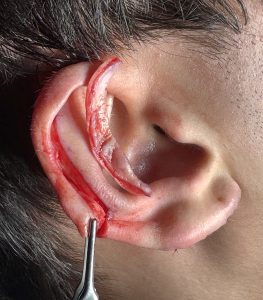

This type of of ear reduction is as close to scarless as is possible. The scar lines are on the underside of the earlobe and between the helical rim and anti helical fold. The superior ear reduction works by reducing/eliminating the scapha fossa and the depth of the valley between the antihelical fold and the outer helical rim. The only potential visible scar line is the 5 or 6mms of the horizontal line across the outer helical rim onto the back of the ear. Fortunately the thin ear skin heals exceptionally well making the risk of the need for a secondary scar revision low.
Key Points
1) The size of the ear is often judged by its vertical length from the top of the helical rim to the bottom of the earlobe.
2) Vertical ear reduction is usually done by a scaphal reduction flap combined with helical rim earlobe reduction.
3) Earlobe length can be reduced 8 to 10mms on average with the strongest influence of the size of the earlobe.
Dr. Barry Eppley
World-Renowned Plastic Surgeon

